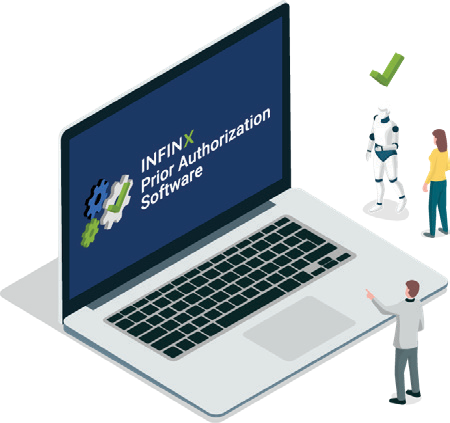White Paper
Innovative Revenue Cycle Management Solutions During COVID-19
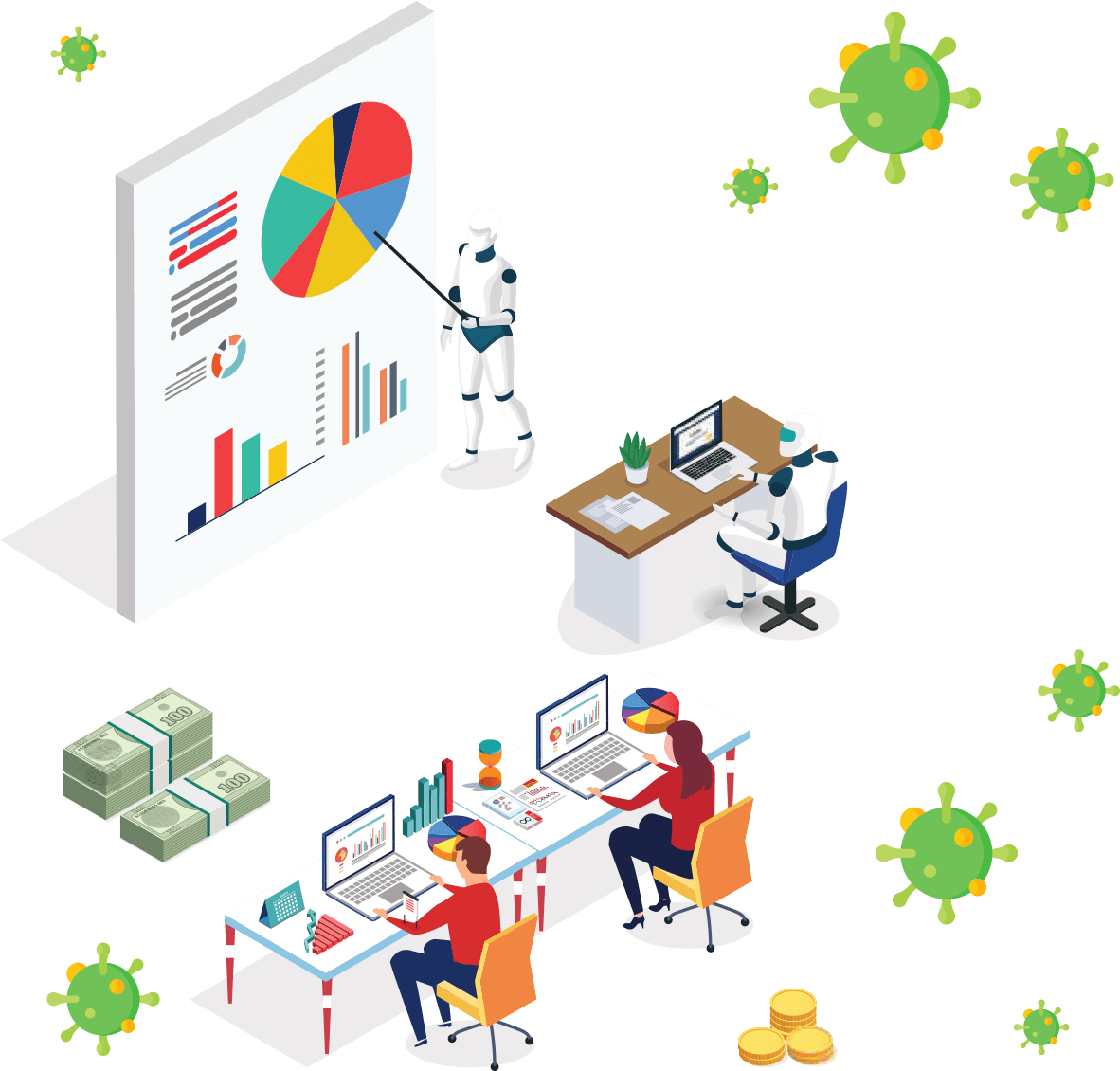

Executive Summary
Before the COVID-19 Public Health Emergency (PHE), hospitals and providers were impacted by an onslaught of changing governmental regulations, insurance payer modifications, and transitioning patient expectations. However, now expectations have changed. Priorities are focused on providing testing and care for the surge of COVID-19 patients while working with severe shortages of equipment and supplies, and somehow being reimbursed in the end.
While the US Congress, the Centers for Medicare and Medicaid Services (CMS), and a vast number of commercial payers sort out how to pay for coronavirus testing and care, our evaluation of the revenue cycle management (RCM) process points to four areas where significant revenue is at risk both now and in the future: 1) coding, 2) billing, 3) AR management, and 4) bad debt/collections. A practice may opt to handle these functions in-house with a mix of automated and manual systems, we outline a far superior structure that brings automation, artificial intelligence (AI), and machine learning technology, supported by highly trained specialists, as a comprehensive solution to today’s uniquely unprecedented RCM process
Exceeding Previously Accepted Industry Norms for RCM
While it’s been the generating of healthcare revenue that’s gotten a lot of the spotlight in the past, billing and collecting that revenue has always been the real workhorse. Practices are now faced with different, but genuine challenges as we enter the “stay-at-home” employment model that’s sure to be followed by the post-COVID-19 era of healthcare. Changing and expanding requirements from government entities and insurance companies, changing treatment models (like telehealth), and RCM issues like rising bad debt and uncollectible amounts leave practices searching for a way forward.
From the macro perspective, maximizing revenue in the healthcare industry’s complex third-party payer system will continue to be a challenge post-COVID-19. With increasingly elaborate payment models and fee schedules sure to be reinstated, and escalating payer scrutiny for advanced testing and care procedures, it’s never been more critical to stay current with new technological advances in the revenue payment lifecycle.
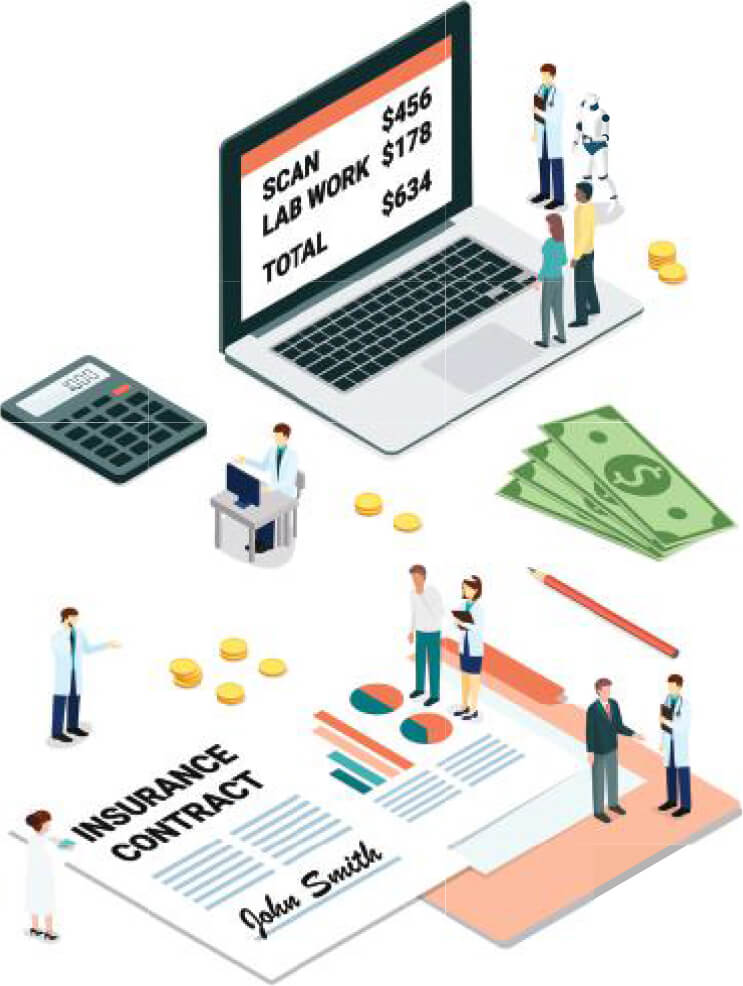
Up until the PHE, according to the Healthcare Financial Management Association (HFMA), the CDC has released findings showing that 47% of commercially-insured consumers were choosing a High Deductible Health Plan (HDHP), hoping to reduce household health insurance costs by lowering premiums.1 With an unprecedented number of people losing their jobs and their health insurance coverage due to COVID-19, the insurance landscape may face even bigger problems in the future. With this massive shift in financial responsibility from government and private insurance payers to consumers, it’s imperative for practices to embrace new technology or risk precious margin on the accelerated
growth of bad debt.
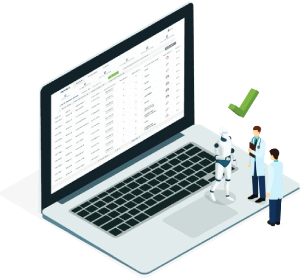
4 Areas Where Strategic Improvements Will Enhance Practice Revenue Post-COVID-19
For these purposes, let’s define the lifecycle as twofold: 1) patient access, including prior authorization (still required for non-COVID-19 care and treatment) and insurance verification, coupled with 2) RCM, including coding, billing, AR management, and insurance discovery. By examining RCM’s key functions, we can determine where immediate, temporary support can be achieved to weather the initial COVID-19 storm and where maximum efficiency for the long-term could be gained. Let’s look at four RCM components and their inherent issues:

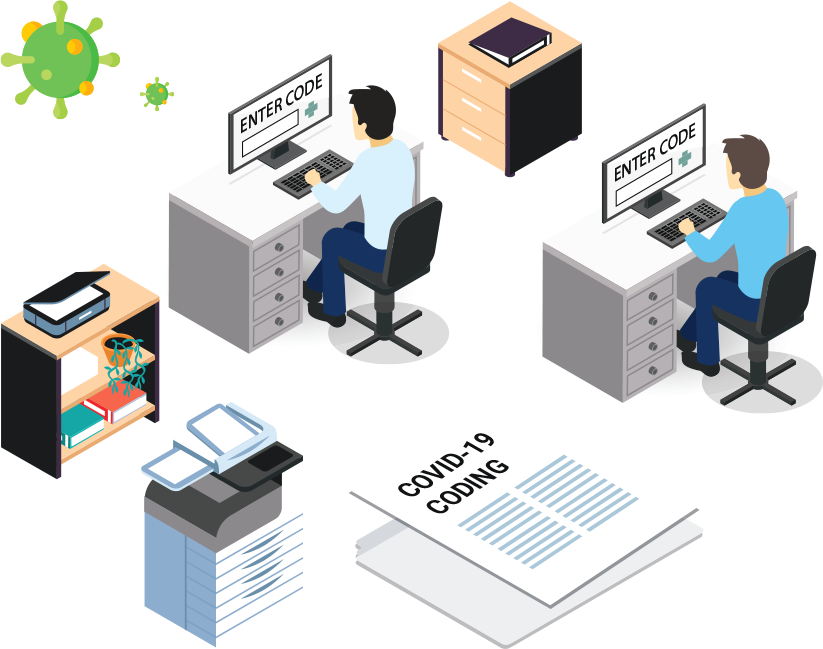
1. The Coding Process
Since its release in October 2015 and the myriad subsequent changes and updates, the ICD-10-CM coding system presents a multifaceted and intricate set of issues, especially for specialties that utilize different care venues (practices, hospitals, imaging centers, outpatient
labs) and complex diagnoses and procedure options. The balancing act of capturing charges and documentation between locations during a typical day requires juggling talents for providers and staff alike. Now add the recent changes to both CPT and ICD-10-CM codes to
accommodate COVID-19 testing and treatment and the new telehealth guidelines and we see that this further complicates the necessary coding function needed to ensure appropriate reimbursement.
Once a patient is seen in any circumstance, the first step is to determine the accurate codes and levels of service. However, whether it’s due to lack of time or chart completion expectations, procedures are often under coded, miscoded, documentation is missing, or level of service is misclassified. This causes severe problems that impact revenue including, denials, underpayment, and abandonment of claims.

2. The Billing Process
Prior to the PHE, one of the biggest pain points for practices was projecting the billing process workflow and the inability to quickly scale for a fluctuating workload. From charge entry to payment posting, everything could be either overloaded or slowed to a crawl based on staffing within the billing department. Now, faced with unknown employment issues in the future, this becomes an even more significant issue.

Staffing issues from the normal (unexpected changes in employment status, family leave requests, and hiring mis-queues) to the unprecedented (furloughed or laid-off staff, etc.) can all create bottlenecks that slow down claims processing and impact bottom-line revenue. This creates further problems with ancillary responsibilities, such as resolving credit balances and managing contract performance to aid in future negotiations.
3. AR Management
At a recent operations symposium held pre-PHE,2 a study (accepted industry-wide) by the Medical Group Management Association (MGMA), estimates the cost to rework a claim that has been denied by insurance is $25.00 for each occurrence. And even more impactful is the fact that between 50% and 65% of denied claims go unchallenged due to lack of time and/or understanding on how to proceed with the revenue thereby lost completely.
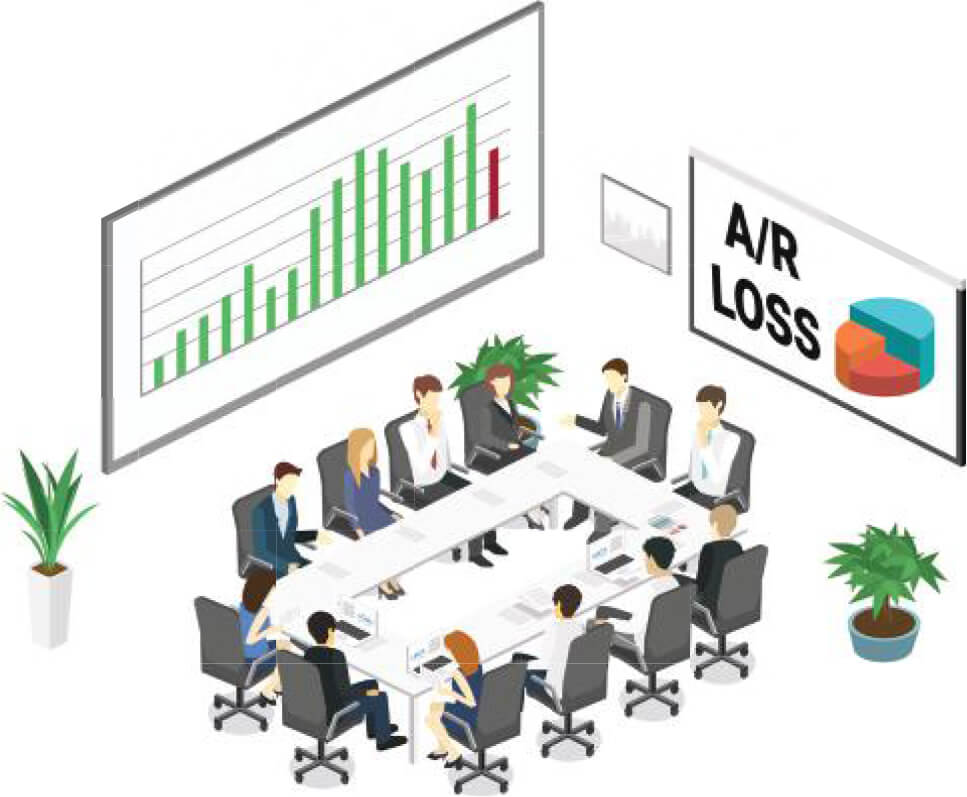
In healthcare’s complex and administratively burdensome accounts receivable process, managing the unpaid or rejected claims can be especially frustrating for billing staff. Not only does it create large blocks of unproductive time while staff members sit on hold or wait in insurance payer queues, but there are often limits on the number of claims that can be submitted or questioned during each call.
This manual process was estimated to cost $10.13 and take 12-20 minutes per claim according to the 2019 CAQH Index and takes valuable staff time away from higher-value billing functions or improving the overall patient experience.3 By automating the claims management process, a solution can ensure an average savings of $7.72 per claim while also saving valuable staff time and lost opportunity that can be redeployed to more important functions.
4. Bad Debt and Collections
The most frustrating component of RCM is bad debt, and those accounts that must be reluctantly turned over to a collection agency for potential follow up. These claims are often overdue because of uninsured patients or unpaid self-pay accounts and end up being written off completely or categorized as charitable care. Bad debt can total as much as 15% of total receipts preCOVID-19, and that number is sure to grow the entire insurance paradigm shifts in the coming year.

Best Automated or Assisted Processes for RCM Post-COVID-19
RCM inefficiencies can pose one of the most perplexing problems in practices today! Complex approval processes and requirements that differ by health insurance plan make claims management a challenge for even the most wellinformed billing administrator. It’s not enough to rely on the status quo; groups today must be proactive in developing plans to improve operations and patient access procedures, as well as their RCM to meet the test.
With the inevitable return to the recent shifting toward maximizing the patient experience and alleviating any roadblocks to collecting timely reimbursement where due, harnessing AI-driven, cloud-based technology to improve administrative workflow makes the most significant in-roads for the expense outlay. Coupled with highly trained specialists, improved automation generates more revenue for less administrative expenses in a reduced time frame.
Coding
Now and in the future, it will be imperative to accentuate the process of coding to achieve accuracy and maximize the shrinking healthcare dollar. If the ongoing education burdens a practice- and personnel-related issues that arise with developing and maintaining a strong coding department, they may want to consider enlisting a third-party partner. A trusted outsideteam can absorb the workflow efficiently and code thoroughly to maximize reimbursement.
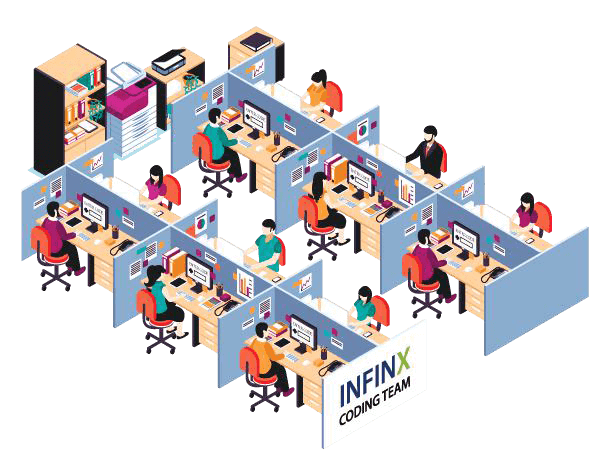
To fully capturing revenue due, whether in-house or with a third-party partner consider:
- A paramount challenge in healthcare, especially with expanding COVID-19 changes, is staying up to date with ICD-10-CM and PCS, CPT, and HCPCS codes through education and knowledge building.
- Minimize human error and careless keying mistakes that can drastically affect reimbursement by implementing an accountability structure that rewards coding accuracy.
- Ensure medical documentation is not only present but accurate and complete with every patient encounter. Payers request this information and will deny claims based on inaccurate, untimely receipt of documentation so be sure to include the following:
- Procedures performed elaborating on medical necessity and level of care requirements,
- Physician or APP’s involvement in patient care and level of service performed,
- Tests ordered and corresponding results with treatment prescribed,
- Billable supplies and equipment used throughout patient treatment,
- Referrals, both incoming and outgoing, and
- Prior authorizations for all procedures and treatment as required by the patient’s insurance provider
- Capture commonly missed tests that are billable or support treatment/diagnosis decisions.
- Code to the highest degree of specificity and code to the diagnosis, not necessarily the symptom.
- Design and implement a review and audit of the documentation and coding process. Not only does this suggest areas for improvement which directly affect the bottom line, but it also ensures compliance with government regulations and contractual insurance payer obligations.
- Make sharing knowledge and training as it becomes available as a core foundation of organizational operations. Everyone impacted should participate in comprehensive opportunities to improve the quality of the coding and documentation program and feel a personal investment.

Billing
The most effective way to address the scalability issue that often stresses the billing function, especially as we navigate the COVID-19 PHE, is to engage a third-party partner that can assume responsibility for executing all aspects of the billing process. Whether temporarily or long-term, utilizing a scalable, cost-effective automated solution that manages billing complexities while meeting payer criteria ensures accurate claims are submitted, paid quickly, and denials minimized.
By engaging an off-site team to provide billing support, these functions would seamlessly resolve behind the scenes:
- Charge Entry
- Payment Posting
- Credit Balance Resolution
- Contract Management
- Analytics (designed for financial management)
AR Optimization
Once a patient has been seen, and a claim has been coded and billed, there are inevitably denials and rejections that prolong payment if not outright stop revenue capture. We should expect that this continues during and after the surge of patients expected with COVID-19. These rejected claims make up the AR and must be worked individually to ascertain the problem and then collect the necessary information before resubmission.
Denials management is often cited as an ongoing problem in many practices. To optimize outstanding 3rd party aging AR, state-of-the-art AI-driven technology is available that can utilize proprietary recovery prediction algorithms to focus efforts on which denials are collectible so that energy is spent on the recovery of revenue and increase of early cash flow.
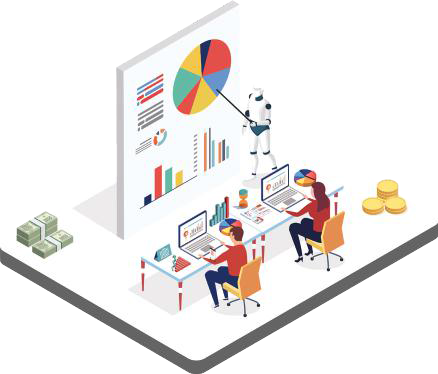
By reducing write-offs and identifying the next best action through machine learning algorithms based on payer guidelines and procedures, a group can be assured the maximum revenue is collected. When evaluating claims management solutions, consider AI-driven software functions critical to achieving the long-term goal of permanently reducing revenue loss from aging claims:
- The ability to predict recovery, including forecasting the dollars potentially available and the timeline to achieve final collections. With machine learning algorithms, unpaid claims can be evaluated on a number of available parameters, such as aging, payer, and modality.
- Access to predictive and deterministic criteria that prioritize follow-up strategy activities to maximize and focus human intelligence efforts where they can be most effective.
- Automated claim status checks matched with the most-likely cause, i.e., integrated insurance verification and eligibility data, CPT mismatch technology, and DOS and benefits check capabilities. Once the cause is identified, appropriate changes are made, and the claim is resubmitted.
- Auto-creation of required appeal letters, if necessary.
- Automated eFax capabilities, when needed.
- The ability to perform a root cause analysis through operational analytics to find where mistakes originate upstream, including insurance verification, prior authorizations, or coding problems, so that processes can be reviewed and upgraded where necessary.
- Adaptability so that if additional areas are identified as automation candidates, integration is possible with ease.
The complexity of a third-party billing system requires thorough review and follow-up when revenue is held up and the bottom line is affected. With the technology available today that harnesses AI-driven automation, machine learning, and predictive analysis, each patient encounter can be verified, submitted, and followed-up on in real-time. As reported in a recent Infinx Case Study, it’s conceivable to recognize a +15% improvement in 90+ days aging AR collections, using the AR Optimization Solution alone.4
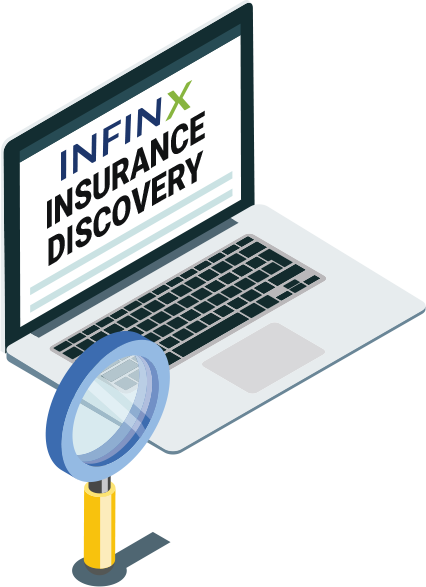
Insurance Discovery to Improve Bad Debt and Collections
One thing we know for sure—throughout the healthcare spectrum, patients frequently present for care without understanding their insurance coverage or benefits. Phrases like “annual maximums,” “remaining deductible,” and “explanation of benefits” may be overwhelming to patients that are unfamiliar with insurance terms and how they’re treated within the industry. The fact that your organization has ended up with an outstanding amount is often not from misrepresentation, but simply misunderstanding.
Couple that with the growth of patient consumerism and High Deductible Health Plans (HDHP) in recent years, and we see a cascading problem that can only worsen with time. The key may be an early intervention with an AIassisted Insurance Discovery cloud-based solution.
With an AI-driven Insurance Discovery Solution, these accounts are processed through an automated coverage identifier package where patient demographics, insurance profiles, and benefits are verified, and undisclosed coverage is identified. These uncompensated accounts can then be submitted to the appropriate insurance and revenue retrieved.
One such solution may be initializing an insurance discovery process that uses AI-driven technology to scour clearinghouses and insurance databases to identify undisclosed coverage. Especially useful for Medicaid and commercial insurances, an Insurance Discovery Solution uses probabilistic analytics and machine learning algorithms to identify missing or incorrect information so that patients’ coverage is properly billed and collected.
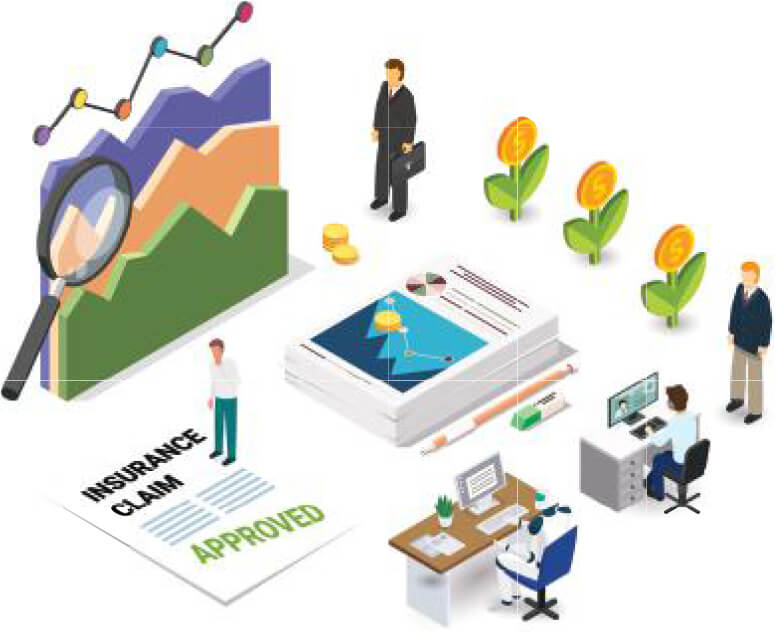
Summary and Conclusions
We are without a doubt in unprecedented times and will, hopefully, look back on the current PHE and stay-at-home orders as a growth experience. While there are changes happening daily that impact patient care and practice financial health, one thing is for sure — part of being successful in healthcare is effectively managing the RCM process. Infinx is here to support your practice, whether on a temporary basis or with long-term involvement. Our solutions minimize risk, save expenses by having no up-front fees, and maximize the bottom line creating a healthy environment going forward.
Instead of accepting ongoing operational shortfalls, each of these solutions brings increased administrative efficiencies that allow for a more smoothly run operation. Overall, this provides higher cash flows, faster recovery times, reduced aging, and improved margins for stakeholders.
To learn more about immediate, temporary opportunities or extended solutions to improve RCM efficiencies, visit www.infinx.com.
Thanks for reading. If you’d like to see the footnotes, please download this white paper as a pdf here.
About Infinx
Infinx provides innovative and scalable payment lifecycle solutions for healthcare practices. Combining an intelligent, cloud-based platform driven by artificial intelligence and automation, with our trained and certified prior authorization, coding and billing specialists, we help clients realize revenue, enabling them to shift focus from administrative details to billable patient care.
